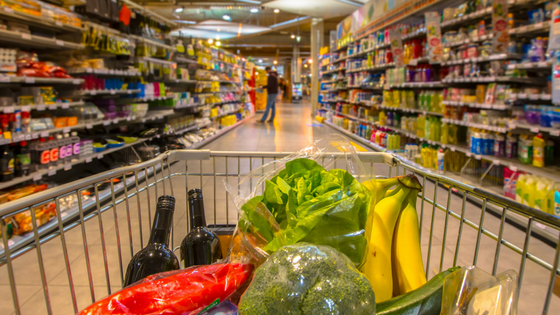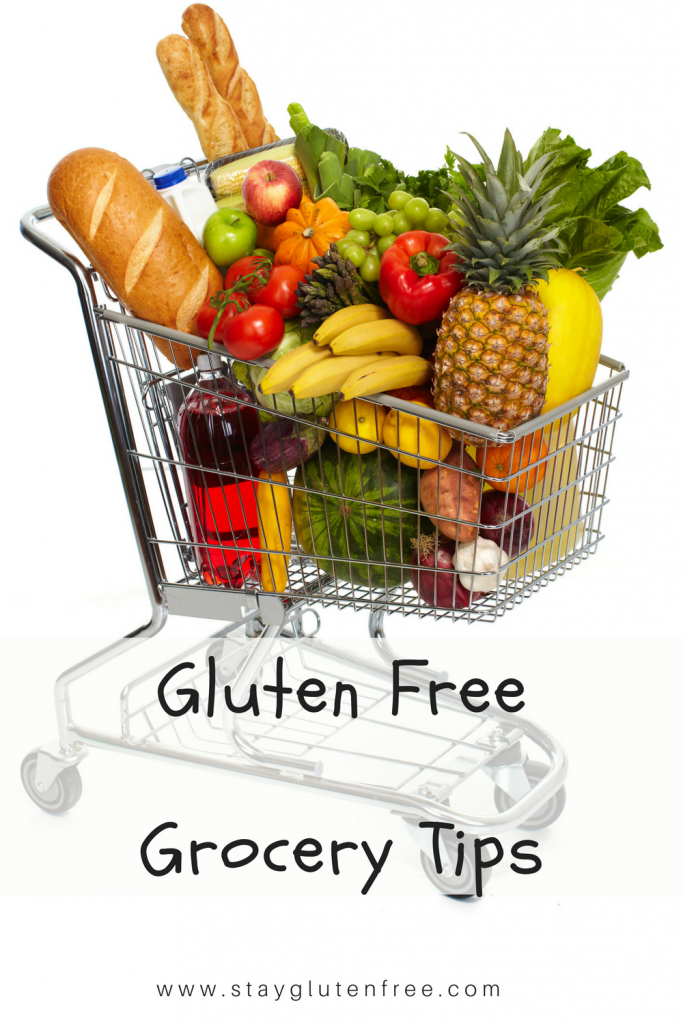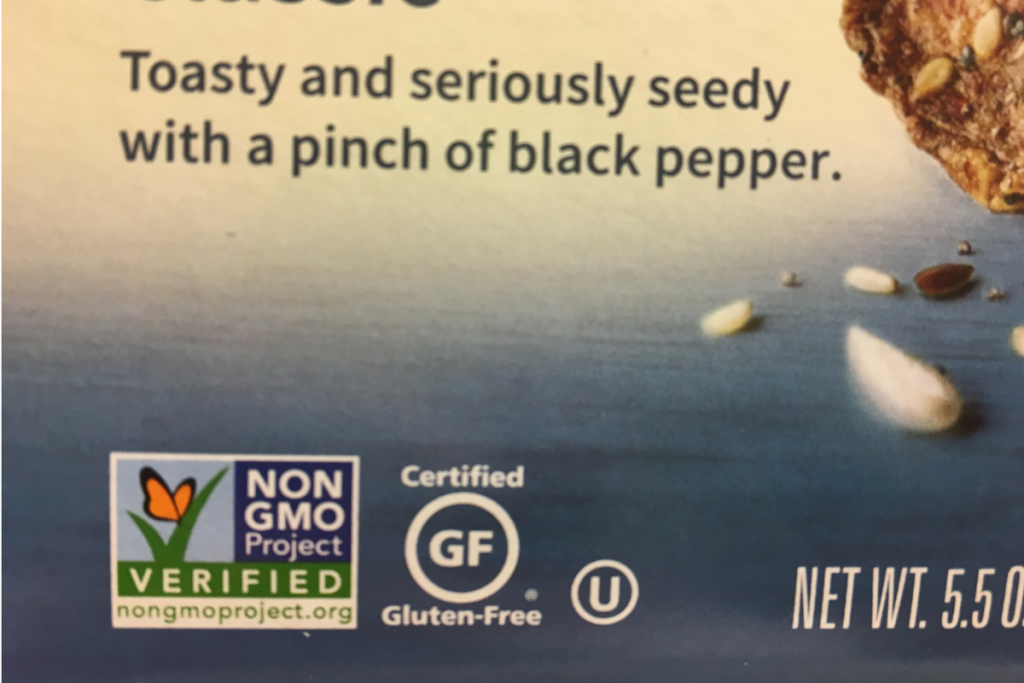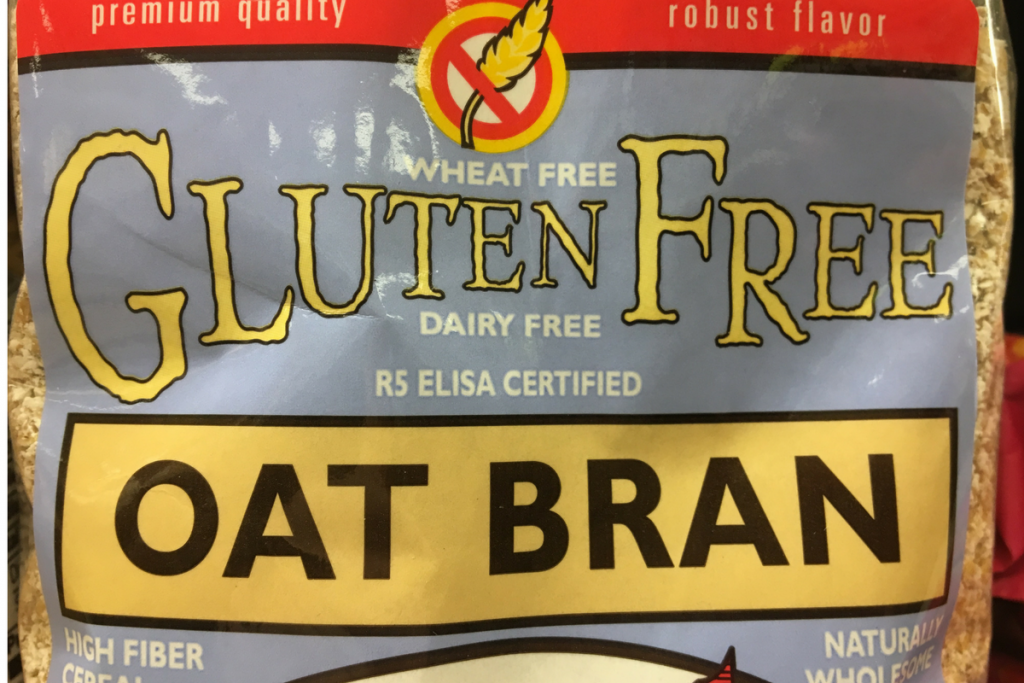Last week I shared with you some important strategies on how to start a successful gluten free diet. After your decision to eat gluten free, it is important to get your kitchen ready to stock up with gluten free food. Today I am sharing some important gluten free grocery tips because navigating the grocery store on a gluten free diet can be a challenge. Here are some things you should know.
Head out with a plan
Before you head out, try to do some meal planning. Think of the food that is in the outside perimeter of the store, this will give you a great starting baseline. The outside perimeter includes fruits, veggies, and lean proteins such as meat, chicken and fish. Feel free to also add in a couple of starches like rice and potatoes.
Try to think of as many meal combinations as you can using just these foods first. Get started on a simple, healthy gluten free diet using this formula. Shopping the outside perimeter of the store allows you to avoid all of the unnecessary processed foods found in the aisles. Pre-packaged foods should be used to supplement your diet, not maintain it.
It’s easy to make a gluten free diet work with fruits, veggies (sautéed in olive oil or roasted in the oven) and lean proteins like meat, chicken or fish. Add a baked potato or some gluten free rice or pasta and you can be all set. This is simple, healthy and delicious.
I know it is not possible to avoid the aisles altogether. That is why I am preparing you so that you know exactly how to choose your food. Just remember to eat these foods in moderation, I will explain why later.
Decide how you want to shop
Now that you have thought a little bit about what your weekly menu is going to look like. You need to decide how and where you will shop.
There are two types of shoppers. The shopper that goes from store to store finding the best price for each product. And there’s the shopper that wants one stop shopping in order to simplify life. Which are you?
I wish I was more methodical about my price comparison. But these days, I go for the easy to navigate, helpful employees, and one stop shopping. This is best for me, but not always best on my grocery bill. I’m working on it.
You will want to definitely choose a store that caters to a gluten free clientele. These stores might have dedicated aisles with gluten free products that are easy to find. In addition, they might also have gluten free signs that are labeled under each gluten free product.
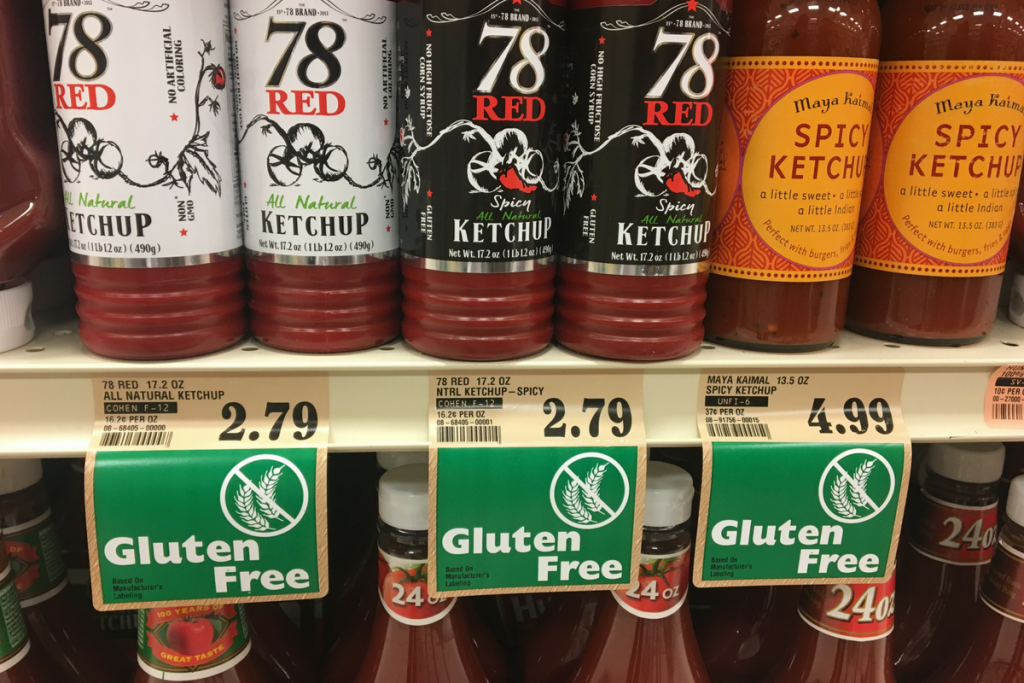
Some other chains like Trader Joe’s have a complete list of their gluten free products that you can pick up and carry around as you shop.
Stores with aisles and lists are going to give you the best shopping experience and meet most of your needs.
Our local grocery store Dierbergs used to have 2 dedicated aisles for their gluten free products for years. I used to know where everything was and could shop the perimeter plus my 2 aisles and be done. It was great.
They are currently going through a remodel and are moving away from this. They still have 2 gluten free isles, but now most of the gluten free food in mixed in with the rest of the other food. My shopping takes twice as long. I had completely eliminated most of the aisles from my shopping experience so I forgot the “normal” lay of the land. I am now having to relearn the entire grocery store.
If you are new to gluten free, you may not have this same problem because you are still used to shopping the grocery store as it normally is. The gluten free isles may be new to you.
Since there is now a gluten free product in almost every category of food, this is probably going to be better, it’s just been a big adjustment for me.
Sticking with mostly the outer perimeters of the grocery store is still the best, healthiest way to maintain a gluten free diet. Adding these foods into your diet first will provide you with a solid framework to get started.
How to shop the aisles
The pre-packaged gluten free food at the grocery store has come along way. Years ago, gluten free food was very hard to find. It then transitioned into a very small selection that completely lacked flavor. And now years later, as more and more people are discovering how gluten has effected their bodies, we are finding aisles upon isles of delicious gluten free food.
Having readily available good gluten free food can make it possible to actually stay gluten free for life. But just because it is gluten free doesn’t always mean it is good for you. Many of today’s gluten free products are filled with fillers and extra additives that make these foods an undesirable choice. Many people that are on a gluten free diet and frequently consume these foods end up gaining weight and feeling worse than they did before.
I would love to say that I had the time and energy to make everything from scratch and that we never eat pre-packaged foods, but life with 2 young kids does not make that possible. In addition, when your autoimmune diseases are constantly stealing your energy, sometimes there really is no other choice.
Thankfully, there are many more food choices today. These days there are many major brands that have decided that our gluten free community is important and in need of delicious food. We are no longer limited to just one brand of pasta, bread and etc.
In my Stay Gluten Free Facebook Communtiy (it’s FREE to join, CLICK HERE), we are very good at comparing products and brands. We share both what we love, and what we don’t, so that we can save each other time and money.
Always read the labels
Even though I have had years of experience shopping gluten free, I ALWAYS read the labels every time I shop, and you should too. I cannot stress this enough. Brands change ingredients all the time and without warning. Even if you buy the same thing every week, always ready the label.
Simply Heinz ketchup is a perfect example of how ingredients can change without notice. This product used to be free of corn syrup and labeled gluten free. Now at some stores the bottle looks exactly the same on the front, but it may be different on the back. One label has corn syrup and no gluten free label and the other label has no corn syrup and a gluten free label. I have to check the label every time I buy this product. Not every Simply Heinz bottle is labeled like the image below.
As I previously mentioned above, most stores try to point out the gluten free products with little signs below the product. I have found that checking the manufacturer’s label on the actual products is the best, most reliable, way to know if your product is gluten free. I have found the little signs to only showcase select gluten free products, not all of them.
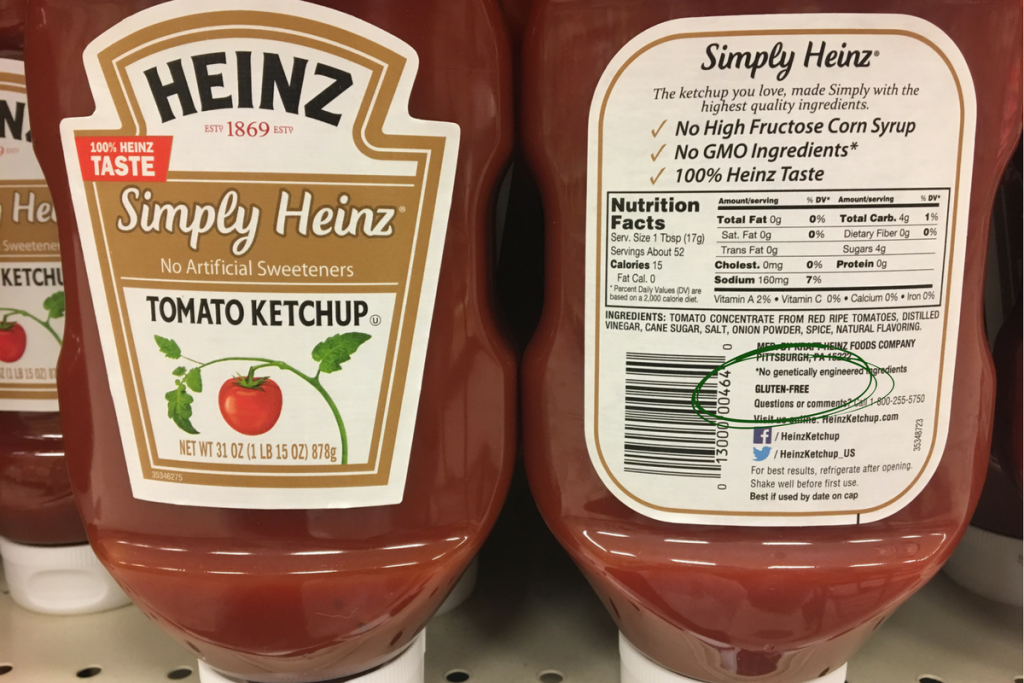
Today there are many tools to help you navigate the grocery store. There is advice from people like me, grocery store shopping guides and phone apps. I recently downloaded an app called the “Gluten Free Scanner” where you can scan the product’s barcode and it tells you if it is gluten free.
If you have ever registered for a wedding or baby shower and you remember the feeling of scanning all those things you didn’t really need, this is exactly that much fun. Your phone makes the perfect scanner.
What to absolutely avoid
Now that we have covered some of the things to look for while shopping, let’s talk about the danger zones. Unfortunately there are areas of the grocery store that you must absolutely avoid. There are too many unknowns to consider these areas safe.
- The deli counters– Cross contamination is a huge factor. There will be no one behind that counter that can guarantee your deli meat did not come in contact with gluten. In addition, not all deli meats are gluten free and they are often sliced on a shared slicer.
- The hot food bars– This is another risk for cross contamination. These hot meals are rarely labeled gluten free. If a meal is labeled, it has most likely been prepared with everything else that surrounds it. Don’t trust it. It’s not worth the risk.
- The bulk bins– These bins are rarely cleaned out and the potential for nearby crumbs to be mixed in is huge. The serving scoops are most likely shared and contaminated as well. They are not safe.
Although these areas are popular for their convenience, in our gluten free community they are the areas to skip.
What to know about Oats
Oats can be very tricky to shop for as well. Oats are considered to be “not safe” unless they have been “certified” gluten free, not just gluten free. They are most often cross contaminated through harvesting and processing before they are packaged. Many people assume that oats are naturally gluten free and safe. This is a wrong assumption to make. Oats, and other grains, are often processed either in facilities or on equipment that is shared with wheat products.
What is the difference between something that is just labeled gluten free vs something that is actually “certified” gluten free? Here are some certified gluten free labels.
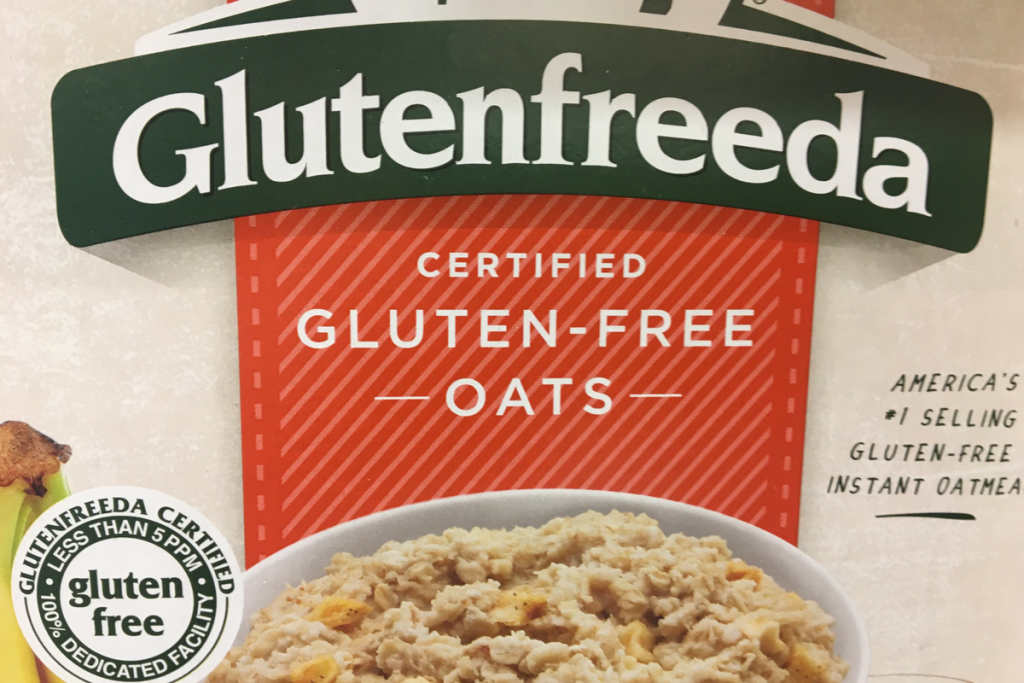
I hope these gluten free grocery tips have been very helpful. Nothing is an exact science and things keep changing daily. I hope this information shortcuts your learning process. You can also read about 3 strategies I use regularly to help me stay the course.
Please feel free to always ask questions. Ask the sales clerks and the managers any questions you may have about food products. In addition, when in doubt call the manufacturers directly. The more questions you ask, the more educated you will be and the healthier you will become.
Until Next Time!






